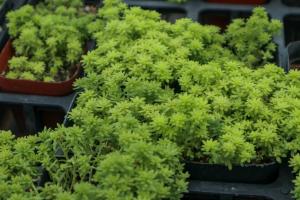Do Rubber Tree Plants Like to Be Root Bound?
Rubber tree plants, also known as Ficus elastica, are popular indoor plants that can grow up to six feet tall with proper care. They have thick, glossy leaves that add an undeniable elegance to any room. However, one question that often arises amongst plant enthusiasts is whether rubber tree plants like to be root bound. In this article, we will explore the answer to this question and more.
What Does Root Bound Mean?
Before we delve into whether rubber tree plants like to be root bound, let's first establish what the term means. A plant is considered to be root bound when its roots have outgrown its container and become compacted. Essentially, the roots become intertwined and constricted, limiting their ability to absorb water and nutrients.
Do Rubber Tree Plants Like to Be Root Bound?
The short answer to this question is no - rubber tree plants do not like to be root bound. These plants benefit from having room to grow and spread their roots. When they become root bound, their growth can become stunted, and they may begin to exhibit signs of stress such as yellowing leaves or wilting.
If you notice that your rubber tree plant is becoming root bound, it is essential to repot it into a larger container. This will give it the chance to continue growing and thriving. When repotting, be sure to use a well-draining potting mix and a pot with adequate drainage holes to prevent overwatering and root rot.
Signs Your Rubber Tree Plant Might Be Root Bound
If you are unsure whether your rubber tree plant is root bound, there are a few signs to look for. One of the most obvious indicators is when the roots start to grow out of the drainage holes at the bottom of the pot. You may also notice that your plant is becoming too large for its container, or that it is growing more slowly than it used to.
If you suspect that your rubber tree plant might be root bound, gently remove it from its container and examine the roots. If they are compacted or circling around the bottom of the pot, it is time to repot.
How to Care for Your Rubber Tree Plant
In addition to ensuring that your rubber tree plant is not root bound, there are a few other care tips to keep in mind. These include:
Watering: Rubber tree plants prefer to have consistently moist soil, but they do not like to be overwatered. Allow the top inch of soil to dry before watering again.
Light: These plants prefer bright, indirect light but can also tolerate low light conditions.
Temperature: Rubber tree plants thrive in temperatures between 60-78°F.
Fertilizer: Feed your rubber tree plant every 2-3 months with a balanced fertilizer during the growing season (spring and summer).
Conclusion
While rubber tree plants may look impressive when root bound, it is essential to remember that they do not like to be in this state. Repotting your rubber tree plant into a larger container when it outgrows its current one is crucial for its continued growth and health.
By following the care tips outlined in this article, your rubber tree plant will thrive and bring joy to your indoor space for years to come.

 how many times do yo...
how many times do yo... how many planted tre...
how many planted tre... how many pine trees ...
how many pine trees ... how many pecan trees...
how many pecan trees... how many plants comp...
how many plants comp... how many plants can ...
how many plants can ... how many plants and ...
how many plants and ... how many pepper plan...
how many pepper plan...































